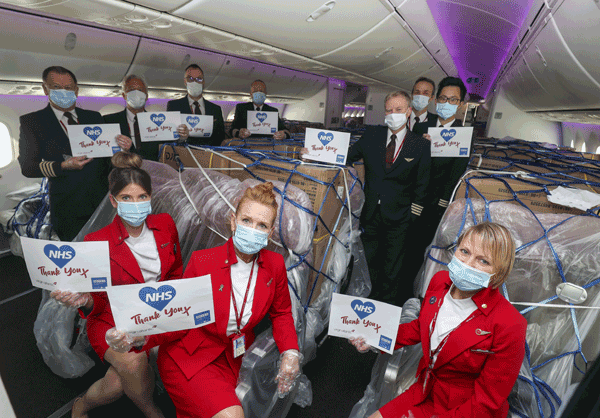|
This past Tuesday showed us just how important
the elevated interest is in air cargo.
Over 1,600 people from around the world
went online to hear from IATA on a webinar entitled, “Transport
of cargo on aircraft configured for the carriage of passengers.”
That session, highlighted, prior to being held, here in FlyingTypers,
delivered high attendance that among other things showed how much interest
there is in the effort to use passenger aircraft for all cargo operations.
The number of carriers now using their passenger
fleet for filling the lost passenger cargo belly space is growing daily
and demand has been very high.
Need To Know
The webinar demonstrated the need for knowledge
that IATA’s own experts have been working on for the last few weeks.
Members of IATA’s security, ground operations, aircraft engineering,
dangerous goods expert and cargo sections were all onboard the live call
and provided the details that many carriers needed for guidance and to
ensure security and safety were also being met.
Feed The Need
IATA provided a measure of just how drastic the
cargo capacity loss of passenger belly space is and estimated that in
the second quarter of 2020 that there will be an 82% belly space capacity
loss.
This loss makes up approximately 65% of
the overall global impact.
Flight cancellations through June 2020 will
be a dramatic 4.5 million flights.
Safety First Credo
Safety was a component that still is the
most critical area that continues to require a lot of attention.
Reviews of the recurrent training have been
given some extensions, but emphasis was put on the need to follow standard
operating procedures and incident reporting.
These types of abnormal operations also
call for a real robust need to look at risk and implementation.
 |
CIC Describes The Action
IATA went into the different ways to move
cargo in the passenger cabin (CIC).
There was in-depth look at how to properly
load cargo in the overhead bins, in the passenger seats and now the move
by some carriers to remove the passenger seats and bulk load cargo secured
to the floor.
The importance of regulators and manufacturers
to ensure proper loading were explained.
IATA and other partners have been working
with the FAA for these types of options.
It is expected that carriers regulated by
FAA could soon remove seats from the cabin and begin loading cargo on
the floor.
It was shown that just putting cargo in
the cabin isn’t as easy as some might think. The webinar went into
further details on all the regulatory hurdles that a carrier must go through
from government agencies including customs, dangerous goods handling as
well as the civil aviation authorities.
Webinar Audience Involvement Solid
The overall event was in the details, but
the audience attendance stayed strong throughout the webinar.
There were some interactive polls during
the event that showed that there is huge amount of interest from those
that registered for the event.
One of these polls showed that over 40%
of the global audience were putting cargo in the seats today.
It looks like CIC will be in our future
for some time to come as more planes are coming online almost daily.
It is evident there are a lot of bright
people that have been working on the need for capacity and let’s
hope it helps not only the supply chain moving but also generates revenue
for the airlines when they need it most.
Geoffrey
|




